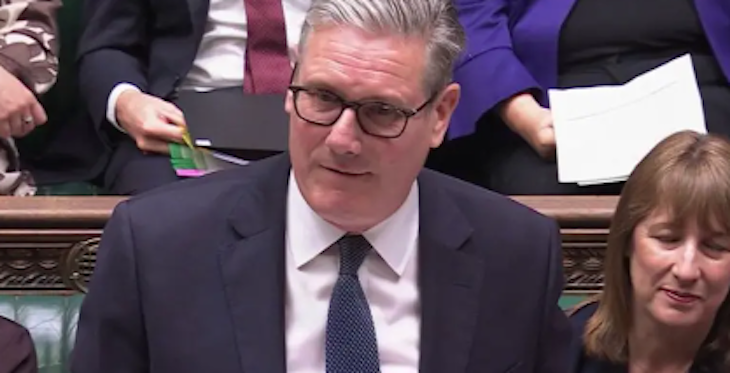If you are someone who revels in the deliciousness of oil paintings, who looks at them and wants to eat them ‘as if they were ice cream or something’, in Damien Hirst’s phrase, then Martin Gayford’s latest book will be a banquet. In part, this is thanks to the illustrations – luscious close-ups of Van Gogh’s brushstrokes like buttercream icing, and a double-page spread of a golden Rothko large enough to tumble into. But mainly it’s due to his intention to understand the medium of painting from the inside out: from the artists’ viewpoint rather than the art historian’s. He is well placed to do this, having interviewed almost every well-known artist (many of them for this magazine) during his past 30 years as a critic. From these conversations, as well as his studies of earlier artists, he gives us this deeply absorbing and original account, far removed from most conventional art history.
The image of the Romantic artist who puts himself through torment for his art is everywhere evoked
He begins briskly, dismissing the usual schools, movements and so on: ‘Rather than constantly evolving towards some further state, painting in all its crucial aspects has remained exactly the same as it ever was.’ An artist today who has chosen the medium of paint is in many ways faced with the same dilemmas as any painter stretching back through the millennia: what surface to choose? What tool – brush or palette knife, squeegee, bucket or automatic paint-squirter? What paint, and how to mix it to the right consistency? One irresistible detail among many is the information that Rembrandt, who had dozens of recipes for mixing paint, developed a method of emulsifying egg, oil and pigment into soft globules that held their shape: that is, 100 years before the Duc de Richelieu’s chef, Rembrandt invented mayonnaise, and used it to paint with.
Once the materials have been selected, there is the slippery concept of control (the more an artist may seem to have, the more they may have to surrender), and the physicality of painting becomes a recurring theme. ‘Our body is crucial,’ says Lee Ufan. ‘Our body does not belong to us. It creates a relationship with the world.’ Creating a painting is a dance (Jadé Fadojutimi), a duel (Auerbach), a tennis match (Ufan again, who compares artists to athletes – ‘as an athlete trains, artists train themselves as well’). A lifelong partnership is maintained between the artist’s body and the medium, obsessively practised and honed in the studio.
Gayford visits many of these studios and describes his interviews in them – usually long, convivial conversations with booze and cigarettes and not much in the way of food, in rooms that vary from those coated with a geological record of paint splatters built up into topography, to pristine, industrial-monastic cells. Cosy they are not. Indeed, the image of the Romantic artist who puts himself through torment for his art is everywhere evoked here – often because of the physical demands each artist’s particular vision demands of them. The ground colour of one of Patrick Heron’s huge canvases took him 14 continuous hours to paint: ‘I couldn’t stop or have lunch or anything because when I came back it would have become minimally drier and wouldn’t merge.’ The consensus is, in Euan Uglow’s words: ‘No one can be perfectionist enough… What’s the point of being slack about painting if it’s the most interesting thing you do in your life?’
A passion for painting inevitably means a fascination with all art, and most of these artists mention the profound inspiration they have gained from others. ‘This phenomenon is usually called artistic “influence”, but is better described as a revelation of what a painting could be,’ writes Gayford. A sense emerges of a community of painters through time, communicating with each other despite what seem superficially to be vastly different results. De Kooning, for example, says: ‘My idols are Rembrandt and Soutine.’ Titian’s brushwork inspires Jackson Pollock. Ideas about composition, colour and representations of the human body spark responses decades or centuries later: El Greco’s resurrected saints speak to Picasso’s prostitutes in a brothel window, which in turn affect Claudette Johnson’s powerful ‘Black Women’.
Looking through this lens, Gayford seems entirely justified in dismissing the threat of other media. Painting has been declared dead with great regularity since the appearance of daguerreotypes, then photography, film and now AI. Yet in each case, paint has again risen up, apparently indispensable, with its extraordinary capacity to communicate paradoxes and universalities beyond words. From the first drawings in ochre crayons on cave walls to Oscar Murillo on his London industrial estate, paint seems to sustain and support human expression in some atavistic way. Murillo himself puts it beautifully: ‘I want to talk about the medium as an infinite well of water. You can continuously draw out of it, and it always gives. It keeps you hydrated.’







Comments